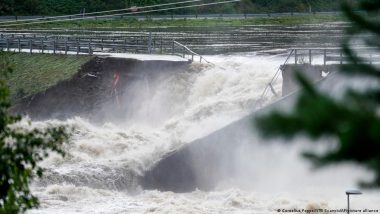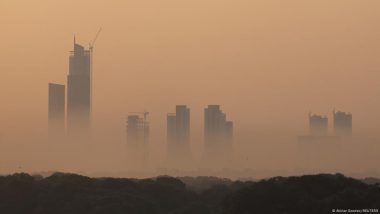No dam is flood-proof. Thousands are at alert level. But dam failure needn't be deadly the way it was in Libya's devastating floods. Here's what you need to know.When the Abu Mansour and Derna dams collapsed during Storm Daniel's attack on Libya, the cries came fast: We've been warning about this for years, said the experts. If there's a flood, they said, it will be catastrophic for the residents living below. And so it was: Thousands are thought to be dead and many more are missing.
Also Read | Brain Implants Make Disabled Walk but Can’t Read Thoughts.
The United Nations Office for the Coordination of Humanitarian Affairs (OCHA) has expressed concerns about two further Libyan dams — the Jaza Dam, between Derna and Benghazi, and the Qattara Dam near Benghazi — but cited "contradictory reports" over the dams' stability.
Contrary reports about the stability of dams is not unique to Libya. There were allegations of contrary reports in Brazil after a mining dam at Minas Gerais failed.It collapsed in January 2019, causing a toxic mudslide that killed 270 people — one year after a Brazilian subsidiary of a German risk assessment firm, TÜV SÜD, had certified the dam to be safe.
What is a dam and why do we build them?
A dam is a way to gather and store water. That can be natural water or wastewater from a nearby mine — if it's water from a mine, people talk of dams containing "mine tailings". Mine tailings can be a mix of materials, metals, chemicals and liquid waste leftover when ore is mined.
Dams can also be used to store up water for irrigation and as a supply of water for livestock, pollution control, energy generation and, if the water is safe, for recreation.
How are dams made and how do they resist water pressure?
There are two main types of constructed, human-made dams: embankment and concrete dams.
Embankment dams are the most common and can be made with waste from mining or milling operations. But they are also made of natural soil and rock that is compacted to create a containment area, or reservoir, for the water.
Its ability to contain the water — or resist pressure from the water — depends on the mass weight, strength and type of materials used to build the dam.
Concrete dams are divided into three subtypes: gravity, buttress and arch dams.
Gravity dams are the most common concrete dams. They are made of vertical concrete blocks and sealed with flexible joints. The pressure of the water hits the dam wall and is forced downwards.
Buttress dams are similar to gravity dams in their shape, but they require less concrete. The forces of the water are diverted down to the foundation of the dam along sloping buttresses.
Arch dams look like a semi-circle or ellipse from above. The wall, which tends to be constructed with vertical slabs of concrete, can be relatively thin. The pressure of the water are carried sideways into abutments.
Dams can also be made with steel and timber.
How do you stop dams from overflowing?
That's the thing — sometimes dams do break and overflow, causing massive flooding, destruction and death. It can wipe out access to roads, food and vital services.
But it is possible to control "overtopped" dams, with outlet works and spillways.
Outlet works can allow a constant stream of water into a river below the dam, for instance, or into a hydroelectric power system, or release it for farm irrigation.
Spillways, meanwhile, are often open chutes or shafts where the water flows out when its level gets high enough to enter an opening.
Why do dams fail?
One of the most common causes for dam failure — that's when the dam breaks in an uncontrolled way — is their age.
In 2021, the United Nations University published a report indicating that "tens of thousands of existing large dams have reached or exceeded an 'alert' age threshold of 50 years, and many others will soon approach 100 years."
The Brumadinho dam at Minas Gerais was built in 1976, which means it was approaching the end of its lifespan. And Libya's Abu Mansour and Derna dams were also built in the 1970s — so, while Storm Daniel triggered their failure, they may have been ready to fail, anyway.
But dams also fail due to poor design and irregular maintenance.
Overtopping can occur if a spillway design is inadequate and can't cope when there's heavy rainfall. The spillway may get blocked over time, too.
The older a dam gets, the more its foundation can experience a natural process called settling. Slopes surrounding the dam can become unstable, and if the original construction materials start to erode, it can cause seepage.
There are other natural causes of dam failure, including earthquakes, floods, extreme weather and landslides.
And then there are the effects of war — bombings and intentional sabotage.
How do you prevent dam failure?
Here's the long answer: ensure regular maintenance, apply engineering advice and recommendations, but also design a good emergency strategy for the event of a dam failure in your area and make sure everyone knows about it.
Because, and this is the short answer as the US Federal Emergency Management Agency (FEMA) puts it, "no dam is flood-proof."
Edited by: Carla Bleiker
(The above story first appeared on LatestLY on Sep 20, 2023 04:10 PM IST. For more news and updates on politics, world, sports, entertainment and lifestyle, log on to our website latestly.com).













 Quickly
Quickly





















